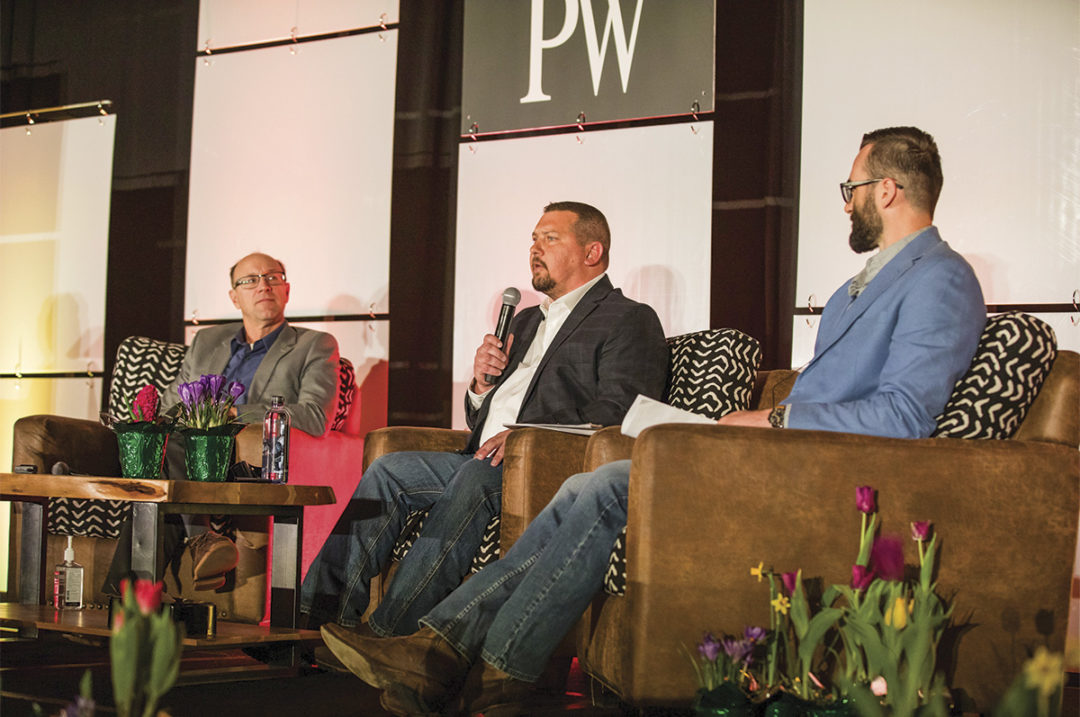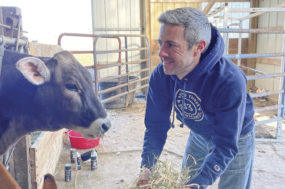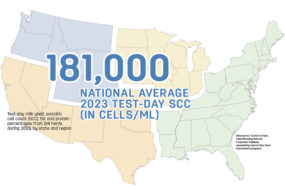As companies at every link in the food chain look to cut their carbon footprint, farmers will play a key role in meeting those goals. However, it has been a challenge for dairy producers to know their own carbon footprint to be able to make improvements or set goals toward improvements.
“Your Farm – Your Footprint” is a new initiative led by dairy farmers through Professional Dairy Producers (PDP) that empowers dairy producers to know and easily understand the environmental footprint of their farms.
“For more than 30 years, PDP has been focused on providing lifelong learning opportunities for dairy producers to improve their business, management and leadership skills,” said Shelly Mayer, dairy producer and executive director of PDP. “The Your Farm – Your Footprint initiative aligns with that mission for producers to learn more about their operation’s sustainability and connect with a peer group to share information and improve their practices and profitability.”
The 2024 PDP annual business conference featured a panel discussion with details about the initiative and experiences of dairy producers who were part of the pilot program. Panelists included Mitch Breunig, dairy farmer and owner of Mystic Valley Dairy; JJ Pagel, owner and operator of Pagel’s Ponderosa Dairy; Carson Dugger, agronomist at Eocene Environmental Group, formerly known as Sustainable Environmental Consultants; and Emily Johannes, director of sustainability and recycling at Nestlé; and was facilitated by Mayer. Dugger also presented a breakout session titled “Calculating Your Sustainability Impact” that took a deeper dive into understanding the models for carbon footprint numbers and practices that impact it.
“Sustainability is no longer a buzzword; we need to align with our processors and customers as they look to reduce their carbon footprint,” Pagel said. “Farmers have been improving our practices to benefit the environment forever, but we haven’t had a way to measure it. Your Farm – Your Footprint gives us the full picture from the dairy through field practices. Then, it is up to us to take it to the next level with a list of additional practices we can adopt at the operation.”
Eocene Environmental Group is an independent third party that will work with participating dairy producers to collect and analyze data. The submitted data and completed reports will be private and owned by the dairy producer. The only data shared will be aggregated data from all participating producers to serve as a benchmark in peer group discussions.
Dairy producers can apply to participate on PDP’s website. After submitting an online application, the process includes four steps:
- Introduction and kickoff call with the Eocene team to learn about the farm and discover the data that is available
- Collecting data on both dairy and field aspects of the operation
- Processing and analysis by the Eocene team
- Delivery of the report to the farmer
“We can work with whatever data a producer has, whether it is in spreadsheets, on a data platform, handwritten notes or simply in your head,” Dugger said. “The Eocene team will also work with any collaborator or partner who your farm works with.”
It will take approximately 60 days to compile the data, with each farm receiving a sustainability suite of information they can use to tell their farm’s story. The suite of materials will include a two-page on-farm practices report, a Sustainable Continuous Improvement Plan (SCIP) that includes scenario planning and practices that can be implemented, as well as a Cool Farm Tool (CFT) report and FARM Environmental Stewardship (FARM ES) report.
These reports will include a carbon footprint score – calculating carbon emissions per unit of fat- and protein-corrected milk. Eocene will use existing models including CFT, FARM ES and CarbOn Management and Emissions (COMET-Farm) Tool, which take into consideration farm-specific information such as location, soil type, crop rotation, energy use, nutrient management, milk production, cow numbers, field yields and other data.
“The dairy industry is always optimistic; as we make investments, we want to do the best we can for our business, our people and our planet,” Breunig said. “Knowing a farm’s carbon footprint will provide a benchmark to improve on with future investments and provide information to share with neighbors, lenders and others to demonstrate your current practices and opportunities to improve.”
The first two sponsors of the initiative are Dairy’s Foundation and Nestlé.
“We are excited to take this journey with dairy producers. Being part of the Your Farm – Your Footprint initiative aligns with Nestle’s role as the largest global buyer of dairy products and our interest for farmers to know their carbon footprint,” Johannes said. “We want to empower farmers to think big and make investments that will benefit their operations and the industry.”
A unique component of the initiative is the creation of peer groups of dairy producers who move through the process together.
“Engaging with fellow dairy producers in the peer group provides a great way to learn about what others are doing and gather ideas on how to improve our own operation and score,” Pagel said, adding that it provides a way to benchmark U.S. dairy operations to see how they compare with dairy farms in other countries.
“We also have [an] opportunity to tell our story to neighbors and community members using examples that the report provided,” Pagel said. “For example, our report said that our operation saved 352 dump truck loads of soil by using cover crops.”
The initiative fills a gap in the dairy industry and allows dairy producers to be in charge of conversations about sustainability, Mayer said. While there are several existing programs and models, the dairy community has been missing a single place where farmers can go. In addition, the importance of export markets to the dairy industry means that a system that is recognized on a global basis is key.
Dairy producers who participated in the pilot program emphasized the importance of understanding current carbon footprint numbers to drive improvement.
“It doesn’t matter if you have 40 cows or 10,000 cows, we can all do better,” Breunig said.
–Written by PDP staff.
This column is contributed by Professional Dairy Producers (PDP), which is the nation’s largest dairy producer-led organization of its kind. PDP focuses on producer professionalism, stakeholder engagement and unified outreach to share ideas, solutions, resources and experiences that help dairy producers succeed.




